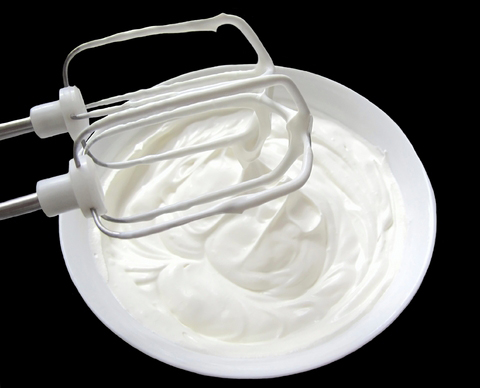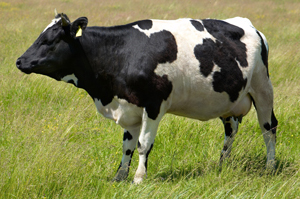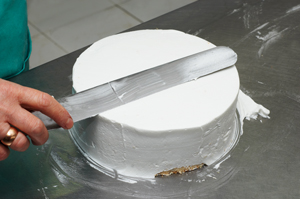Whipping cream or buttermilk? It's more or less butterfat


The amount of butterfat is the key.
Whipping cream and buttermilk are very different products created from the same source: fresh, pure milk. There are several dairy products to be found along the road from whole milk to butter.
Whipping cream, also called heavy cream, has many uses beyond the standard dessert topping. It is used for thickening soups, making sauces, and is a critical ingredient for making homemade ice cream.
Whip cream is created by separating whole milk. It has a high butterfat content. Cream is separated from milk with centrifugal force; the amount of butterfat determines the type of cream. Whipping cream is typically ultra-pasteurized, which extends its shelf life as far as 60 days.
Buttermilk is a common ingredient in baking recipes, and also makes a great soup base. It has a tangy flavor that makes a great low fat substitution for sour cream. Due to its high acidity, buttermilk is an outstanding marinade.
Surprisingly, buttermilk contains no butter at all. It earned its name from traditional butter churning. After the churning was complete, the remaining liquid was called “milk from the butter”, or buttermilk. Modern “cultured” buttermilk is made by fermenting fat free or skim milk. It stays fresh for up to two weeks in the refrigerator, but may be used for baking even after its expiration date.
The heart of the matter: Milk
Whether from cows, goats or yaks, milk contains valuable proteins, calcium, and vitamin C. Unfortunately for many adults, it also contains the sugar lactose. Apart from a few plants and flowers, lactose is only found in milk. Lactose intolerant people experience unpleasant digestive difficulties because they lack the enzymes needed to digest the sugar in dairy products.
Milk Processing
Milk processing today involves steps to ensure a safe, standardized product. Improved shelf life allows distribution of fresh milk for everybody.
Homogenized milk has been treated with high pressure to break down fat molecules. This gives milk a uniform consistency and prevents separation.
Pasteurization involves quickly heating the milk and cooling it back down. This process kills microorganisms that cause milk to spoil. A newer process called Ultra Pasteurization uses higher heat but for a shorter time. The sterilization effect is longer lasting than traditional pasteurization.
Reduced fat milk is created by first removing all fat from the milk, then returning the desired amount. This allows the fat content of the final product to be precisely controlled.

- USDA Organic | USDA
Many USDA agencies serve the growing organic sector. Whether you're already certified organic, considering transitioning all or part of your operation, or working with organic producers, we have resources for you.
Organic dairy farms
Organic milk costs more than milk from a commercial farm. There has been dispute about whether organic milk is more healthy than regular milk, but there is a clear impact in terms of animal rights and environmental concerns.
There are four requirements from the U.S. Department of Agriculture to certify organic milk. The federal regulations are:
- Cows may not be treated with Bovine Growth Hormone (BGH)
- Cows may not be treated with anti-biotics
- Cows’ feed may not be grown with pesticides
- Cows must have “access to pasture”
Current studies are showing that milk from cows who are pasture fed contains higher levels of Conjugated Linoleic Acids (CLAs). CLAs are “good fats” that decrease diabetes and heart disease. Organic milk from cows given a fresh grass diet has less pesticide residue. It contains more vitamins, antioxidants, and omega-3s.
Whether from a commercial or organic dairy farm, milk produces many products. Heavy cream and buttermilk are the two extremes in terms of butterfat content.
Butterfat content
Dairy product
| Butterfat content
| Relative shelf life
|
|---|---|---|
Whipping Cream / Heavy Cream
| 30 – 38%
| 60 days
|
Light Cream
| 18 – 30%
| 10 days
|
Half & Half
| 12%
| 1 week after opening
|
Whole Evaporated Milk
| 8%
| 6 months
|
Sweetened Condensed Milk
| 8%
| 6 months
|
Whole Milk
| 3 – 5%
| 14 days
|
2% Milk
| 2%
| 14 days
|
Skim Milk
| 0 – .5%
| 5 – 10 days
|
Buttermilk
| 0 – .5%
| 2 – 3 weeks
|
Note: Butterfat percentage does not reflect total fat content.

How to substitute dairy products
Run out of supplies? Here’s how to substitute:
Whipping cream, or heavy cream, can easily be made in your own kitchen. Some claim homemade cream gives a better flavor to the recipe, and prefer it to store-bought. Simply melt 1/3 cup of butter in a saucepan. Stir in 3/4 cup of milk, and there you have it. Your own heavy cream. If you use reduced fat milk instead of whole, be sure to add a tablespoon of flour to thicken the cream. Please note: this cream will not whip.
Many people substitute heavy cream with evaporated milk because it has a lower fat content.
Half & half, or coffee cream, is very inexpensive when made at home. Mix equal parts light cream and milk.
Evaporated milk is nothing more than fresh milk with 60% of its liquid content removed. It can be substituted by mixing 2/3 cup of dry milk with 3/4 cup of water.
Condensed milk is not interchangeable with evaporated milk because it is sweetened. Add 1/2 cup of warm water to 1 cup + 2 tablespoons of dry milk. Set in a pan of hot water before you add 3/4 cup of sugar. Stir well until the sugar is dissolved. Makes equivalent of one can of condensed milk.
Buttermilk can be substituted with milk that you have soured yourself. Use fat free or skim milk. Put 1 tablespoon of either white vinegar or lemon juice (both are acidic) into a measuring cup. Add fresh milk until you have one total cup of liquid. Let stand for 5 minutes.
© 2009 wyanjen at HubPages
Whipping cream or buttermilk? It's more or less butterfat








